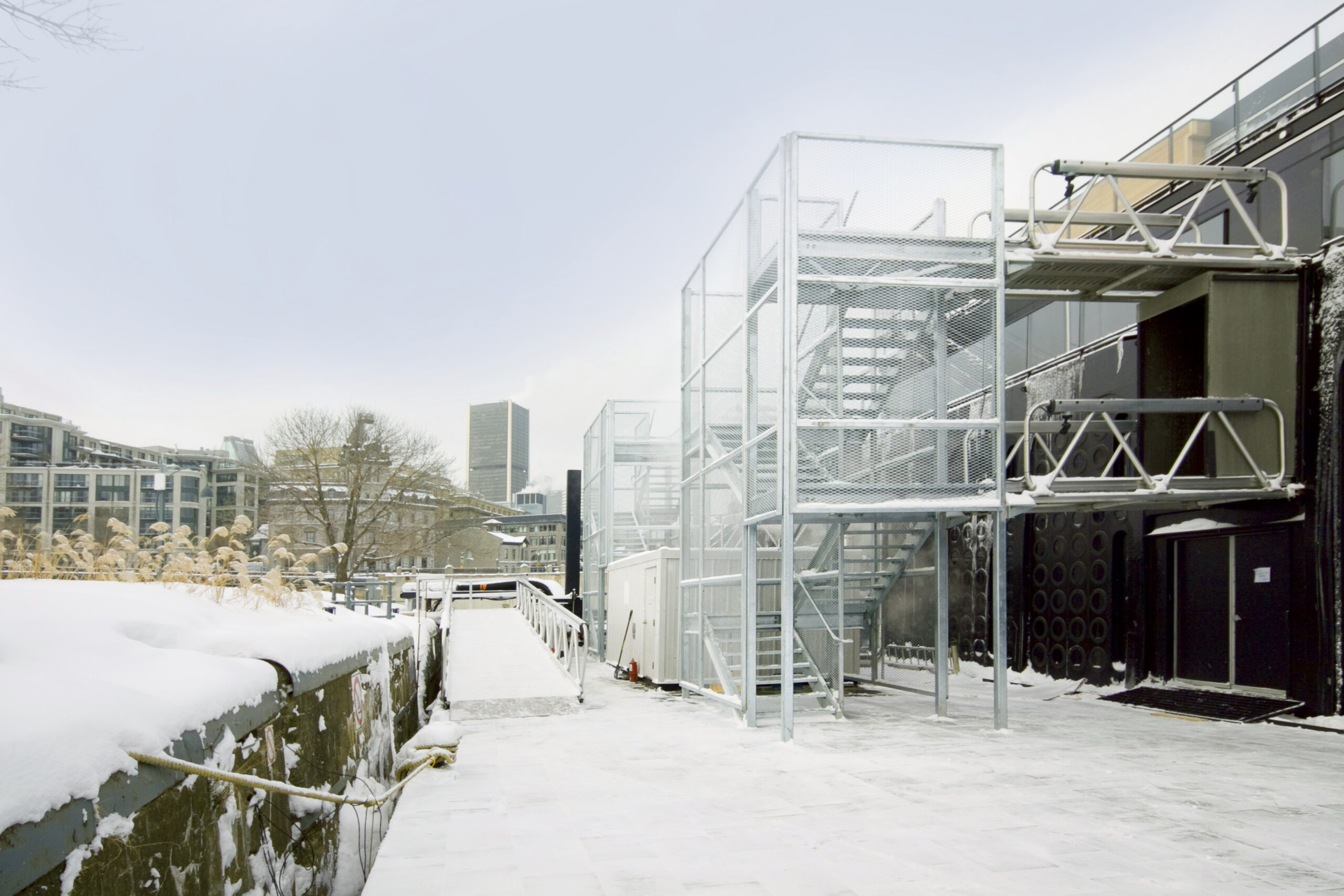With proven expertise in aluminum applications, the MAADI Group is adding build/design pedestrian and bicycle bridges to its list of engineering specialties.
DECEMBER 10, 2010—MONTREAL, CANADA — The MAADI Group, a leader in the aluminum structural engineering market, is actively engaged in the new build/design pedestrian and bicycle bridge segment. The MAADI Group offers clear benefits, since such structures offer excellent technical characteristics, require minimal maintenance, weigh far less than other options and offer a high residual value. Aluminum can also be recycled indefinitely. Furthermore, MAADI provides a long limited warranty against deterioration of the materials—a promise quite difficult for steel bridge makers to match. MAADI enjoys a constantly rising demand for its services from communities seeking to implement sustainability programs geared to the needs of pedestrians and cyclists.
The technical demands of this new market focus on lifelong maintenance costs for such structures. The MAADI Group only uses aluminum for these kinds of bridges because it is a futuristic and environmentally responsible material with an unlimited lifespan. MAADI employs aluminum alloys that deliver unsurpassed benefits, including mechanical strength equal to that of mild steel, a substance traditionally used for pedestrian bridges. A study on the maintenance cost of a steel pedestrian bridge built according to the Canadian Highway Bridge Design Code Products (CSA S6-05) was commissioned in April 2010 by the Centre québécois de recherche et de développement de l’aluminium (CQRDA). Conducted by engineer and scientist Frank Ajersh, a retired professor at the École Polytechnique de Montréal, the report strongly endorsed using aluminum for such bridge projects. Based on Prof. Ajersh’s study and the same CSA S6-S5 standard, the MAADI Group compared costs for two similar bridges—one in steel and the other in aluminum—over a 50-year period. Although the steel bridge’s purchase cost was some 20% lower, it became far less attractive once actual operating costs over 50 years were taken into account. Internal results of the MAADI Group’s study are astonishing. When we calculate the constant maintenance required to keep a “less expensive” steel bridge from rusting over 50 years and consider a residual value from the ‘scrap metal’, the cost of the steel bridge (based on Prof. Ajersh’s study) will vary from 233% to 406%1 from its aluminum counterpart.
Alex de la Chevrotière, an aluminum structural design specialist said, “The Canadian Bridge Code requires a lifespan of 75 years. We don’t need to extend our cost studies over a period of more than 50 years to realize that if municipal tendering specifications factored in a structure’s full service life and not just its purchase cost, aluminum would help cut expenses dramatically, while contributing to sustainable development and respect for the environment. Unfortunately, the issue is one of education. Engineers and architects are not aware of all the possibilities that aluminum affords.”
Because the oxide layer that naturally forms on the surface of aluminum provides permanent corrosion resistance, this material can be endlessly recycled without losing its properties. Aluminum is also well suited to the economic, technical, environmental and aesthetic demands of this growing market.
MAADI Group bridges with a span of up to 53 m and clear width of as much as 3.7 m are ideal for a wide range of applications, such as expanding existing pedestrian bridges, golf courses, naval facilities, bike paths, elevated walkways between buildings and bridges for snowmobiles and all-terrain vehicles.
1 The extent of this difference depends on the coating used to protect the steel. Prof. Ajersh’s costs analysis employed methods developed by Riena et al.2 and Helsel et al.3.
Bibliography for Prof. Ajersh’s Study
2 M. P. Reina, K.R. Shields and M.F. MeLampy, “Costing considerations for maintenance and new construction coating work,” Corrosion 98, NACE International, paper No. 509.
3 J.L. Helsel, R. Lanterman and K. Wissmar, “Expected service life and cost considerations for maintenance and new construction protective coating work,” Corrosion 2008. NACE International, paper No. 08279.
Installation of Five MakeABridge Gangways: A First for the MAADI Group
Owners of the world’s first floating spa, Bota Bota Spa-sur-l’eau, in Montreal’s Old Port, asked the MAADI Group to design and build five gangways to a 52-metre vessel given a new life as a high-end spa. The project price tag was some $100,000. These new MakeABridge® gangways have been in use since November 29, 2010. The build/design deal, which was signed on October 2, 2009, provided for the delivery and installation of five modular gangways by the MAADI Group.
Encouraged by its initial successes, the MAADI Group is targeting a large Canadian market share for considerable growth in this new build/design segment.

